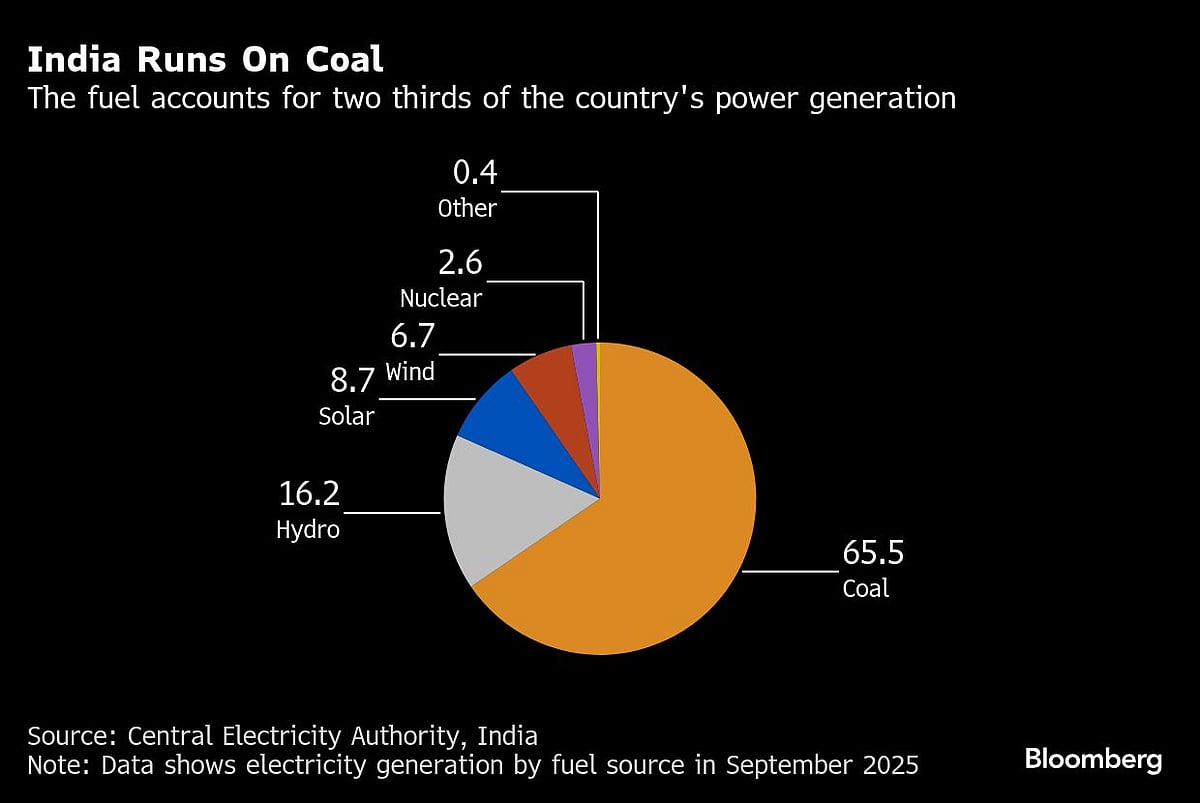India’s Green Shift May Speed Coal Power Shutdowns By 2030
Coal still meets about two-thirds of India’s electricity demand, and the government has announced plans to add nearly 90 gigawatts of additional capacity through 2032.

India may be ready to replace some of the country’s oldest and most polluting coal-fired power plants by the end of the decade, according to Tata Power Co. Chief Executive Officer Praveer Sinha.
The country’s rapidly expanding renewable energy fleet, including facilities that combine generation and storage, that are slated to come online within five years, will bolster the stability of the national grid, Sinha said in an interview.
“It’s a matter of time,” he said. “There are a large number of plants in India which are more than 40 years old, and they are the first that need to go because not only are they polluting more but they’re also very inefficient.”
Coal still meets about two-thirds of India’s electricity demand, and the government has announced plans to add nearly 90 gigawatts of additional capacity through 2032. Almost a fourth of the 290 plants that run on the fossil fuel are more than 25 years old, according to Global Energy Monitor. That is typically the age when such facilities start to lose efficiency.
India has been a staunch advocate for the right of developing nations to prioritize energy security over environmental concerns, emphasizing the low per-capita emissions of its citizens. The country’s advisory agency on electricity had previously recommended that thermal plants avoid shutting down or repurposing their coal-based power stations before 2030 to avoid disruptions as demand grows.

The South Asian nation currently has around 220 gigawatts of clean energy capacity, and the government plans to more than double that by 2030. However, electricity demand is growing rapidly, outpacing its ability to inject renewable into the grid. Climate change is adding to the challenge, complicating predictions. The country’s solar and wind sectors also remain heavily dependent on Chinese imports to stay competitive.
Climate variability is part of the reason why “there have been certain decisions to ramp up coal, which may not have been required otherwise,” Sinha said.
The scale needed to keep renewable power affordable will be difficult for India to achieve on its own, he said. Still, efforts to build a more resilient supply chain “will be a critical factor,” as they will create an enabling environment for future technologies that are currently being explored, he added.

